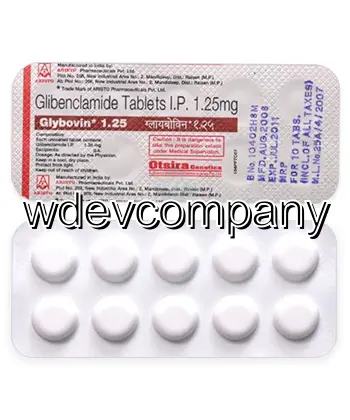| Package | Dosage | Price | Price per Dose | |
|---|---|---|---|---|
| Dosage: 2,5mg | ||||
| 360 pill | 2,5mg | $323.27 | $0.90 | |
| 180 pill | 2,5mg | $173.93 | $0.97 | |
| 120 pill | 2,5mg | $124.73 | $1.04 | |
| 90 pill | 2,5mg | $101.89 | $1.12 | |
| 60 pill | 2,5mg | $73.78 | $1.23 | |
| 30 pill | 2,5mg | $43.91 | $1.46 | |
| Dosage: 5mg | ||||
| 360 pill | 5mg | $284.62 | $0.79 | |
| 180 pill | 5mg | $165.14 | $0.91 | |
| 120 pill | 5mg | $115.94 | $0.97 | |
| 90 pill | 5mg | $91.35 | $1.02 | |
| 60 pill | 5mg | $63.23 | $1.05 | |
| 30 pill | 5mg | $36.88 | $1.23 | |

Glibenclamide Description
Overview of Glibenclamide
Glibenclamide, also known as glimepiride in some regions, is a medication primarily used to manage type 2 diabetes. It belongs to a class of drugs called sulfonylureas, which work by stimulating the pancreas to produce more insulin. This helps to lower blood sugar levels effectively. Many patients with type 2 diabetes find glibenclamide to be a reliable option for controlling their condition when combined with a healthy diet and exercise. Its long-standing use in medicine attests to its effectiveness, although like all medications, it requires careful monitoring and proper use.
Effectiveness and Benefits
One of the key advantages of glibenclamide is its ability to quickly reduce blood glucose levels. Patients often notice improvements in their overall condition within days of starting the medication. It is particularly beneficial for individuals who have insufficient insulin production. Regular use of glibenclamide can help prevent complications associated with uncontrolled diabetes, including nerve damage, kidney issues, and cardiovascular problems. Its affordability compared to some newer therapies also makes it a popular choice among many patients and healthcare providers.
Possible Side Effects and Risks
While generally well-tolerated, glibenclamide can cause side effects in some users. The most common include hypoglycemia, which is a dangerously low blood sugar level, leading to symptoms like dizziness, sweating, confusion, or even fainting. Weight gain is another possible side effect due to increased insulin activity. Less commonly, allergic reactions or gastrointestinal disturbances like nausea and stomach pain may occur. It is crucial for patients to monitor their blood sugar closely while on this medication and to communicate any adverse effects to their healthcare provider.
Precautions and Considerations
Glibenclamide should be used with caution in certain populations, such as elderly patients or those with liver or kidney impairment. These conditions can affect the drug’s metabolism and increase the risk of hypoglycemia. Combining glibenclamide with other medications, especially other blood sugar-lowering agents or alcohol, can lead to unpredictable effects and should be avoided unless supervised by a healthcare professional. Patients should also adhere strictly to prescribed dosages and regularly undergo medical check-ups to assess medication efficacy and safety.
Usage Guidance
The medication is typically taken once daily, often before breakfast, to maximize its effectiveness throughout the day. It is important not to skip doses, as this can result in unstable blood sugar levels. Dietary management plays a significant role in conjunction with glibenclamide therapy. Patients are advised to follow their healthcare provider’s instructions and maintain a balanced diet rich in fiber, fruits, and vegetables while avoiding excessive sweets or alcohol.
Conclusion
Glibenclamide remains a valuable medication for many people managing type 2 diabetes. When used responsibly and under medical supervision, it can significantly improve blood sugar control and contribute to better health outcomes. Patients should remain aware of potential side effects and maintain regular communication with their healthcare team to ensure safe and effective treatment. Proper lifestyle changes, combined with medication, are essential for optimal management of diabetes.